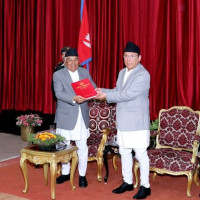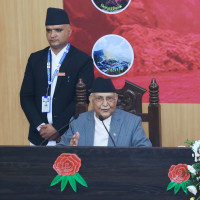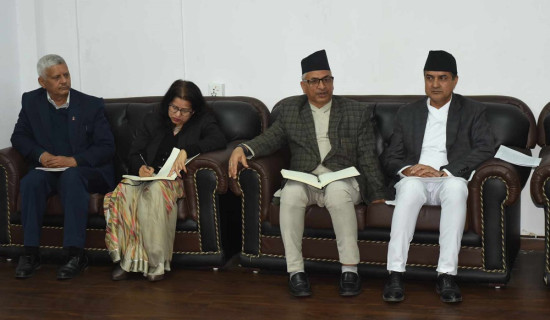- Wednesday, 12 March 2025
Human error likely cause of last year’s Tara Air crash
By A Staff Reporter,Kathmandu, Feb. 23: The 9N-AET Tara Air plane crash of May 29, 2022 could have been caused by the flight crew’s failure to monitor and maintain proper course while inadvertently flying in instrument meteorological (cloudy or low visibility) conditions with the aircraft’s Terrain Avoidance and Warning System (TAWS) inhibited.
Issuing a statement on Wednesday, the Ministry of Culture, Tourism and Civil Aviation shared that the five-member probe commission formed on May 30 to look into the accident had submitted its final draft report to Minister Sudan Kirati and that this report concluded the crew’s aforementioned failure probably led to the crash that killed all 22 people on board.
At around quarter past 10 on May 29 last year, the DHC6-300 Twin Otter aeroplane, belonging to Tara Air, went missing while flying from Pokhara to Jomsom. An intensive search followed which found the wreckage of the plane at Sanusare, Thasang Rural Municipality–2, Mustang at an altitude of 14,500 feet the next morning. There were no survivors.
Similarly, the commission, led by senior aeronautical engineer Ratish Chandra Lal Suman, has also identified eight factors that contributed to the tragedy. One of them, as per the Ministry’s statement, was the cabin crew’s failure to follow the standard operating procedures of their company.
Standard operating procedures are frameworks of common procedures set out by an airline which supports pilots in operating a commercial aircraft safely and consistently. They provide step-by-step instructions on how to carry out the tasks.
Another factor that played a role in the disaster was the plane was flying with its TAWS inhibited during deteriorating weather conditions. Furthermore, the report states that the pilots may have suffered a loss of situational awareness.
As per the report, the co-pilot of this particular flight also held less experience and the cockpit had a high crew gradient. The latter indicates an imbalance between authority from the captain and assertiveness from the crew, with the captain or leader being perceived as overbearing or dominant.
The report also found a poor Crew Resource Management (CRM). CRM refers to the use of all available resources for flight crew personnel to assure a safe and efficient operation. There was also an underutilisation of the available navigation instruments. It was also found that the performance of the pilot-in-command was likely less than optimum because he was having to execute all of the cockpit duties.
Tara Air, the carrier that operated the plane, is a subsidiary of Yeti Airlines which suffered another plane crash on January 15 near the Pokhara International Airport. That particular crash claimed 72 lives and is currently being investigated by a different commission.
Meanwhile, the Ministry informed in its statement that copies of the report have been forwarded to International Civil Aviation Organisation (ICAO) as well as other relevant bodies for a 60-day review. The draft report will only be finalised and released after the review is completed.












-original-thumb.jpg)


